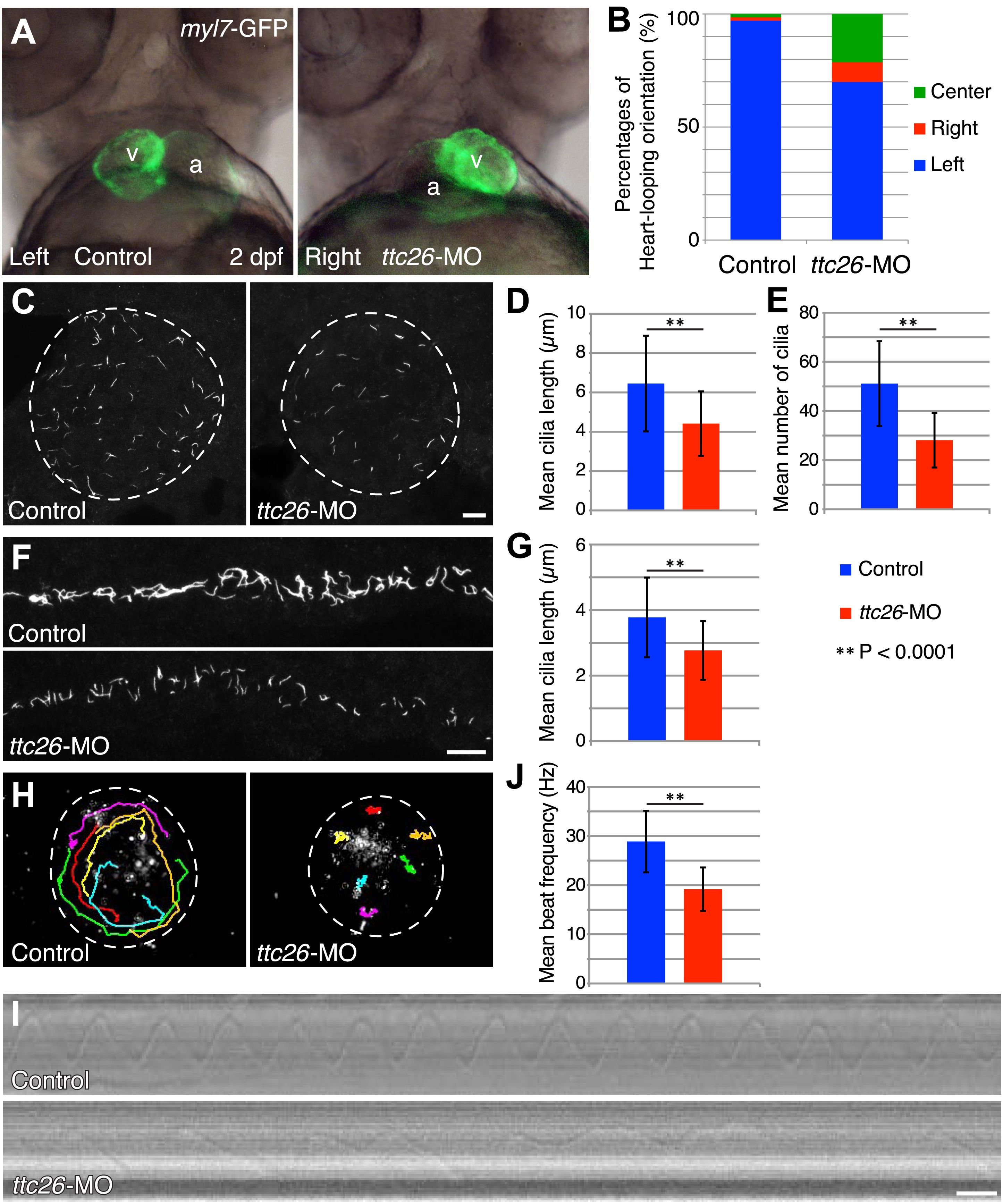Fig. 2
ttc26 knockdown zebrafish shows phenotypes typical of defective cilia.
(A) Expression of TTC26 in control and ttc26 knockdown zebrafish. 3 dpf embryos were lysed with 1× SDS sample buffer and detected by Western blotting with TTC26 and actin antibodies. Control, AUG-MO and SP-MO show negative control, translational blocking, and splice blocking ttc26 morpholinos injected embryos, respectively. Actin antibody was used as a loading control. (B) Brightfield images of control and ttc26 knockdown fish at 3 dpf. ttc26 knockdown fish showed phenotypes typical of defective cilia. (C) Representative images of anterior region of embryos at 2 dpf. ttc26 knockdown fish showed hydrocephalus (black arrowhead), pronephric cyst (arrow), and abnormal ear otolith formation (white arrowhead). (D) Transmission electron micrographs of retina at 4 dpf. ttc26 knockdown fish lost outer segment (OS) of photoreceptor. Bar: 5 µm. (E) Transmission electron micrographs of connecting cilium in the retina. ttc26 knockdown fish still have connecting cilia (CC: arrow) despite the absence of outer segments. Bar: 500 nm. CC, connecting cilium; IS, inner segment; M, mitochondria; N, nucleus; OS, outer segment; RPE, retinal pigment epithelium.

